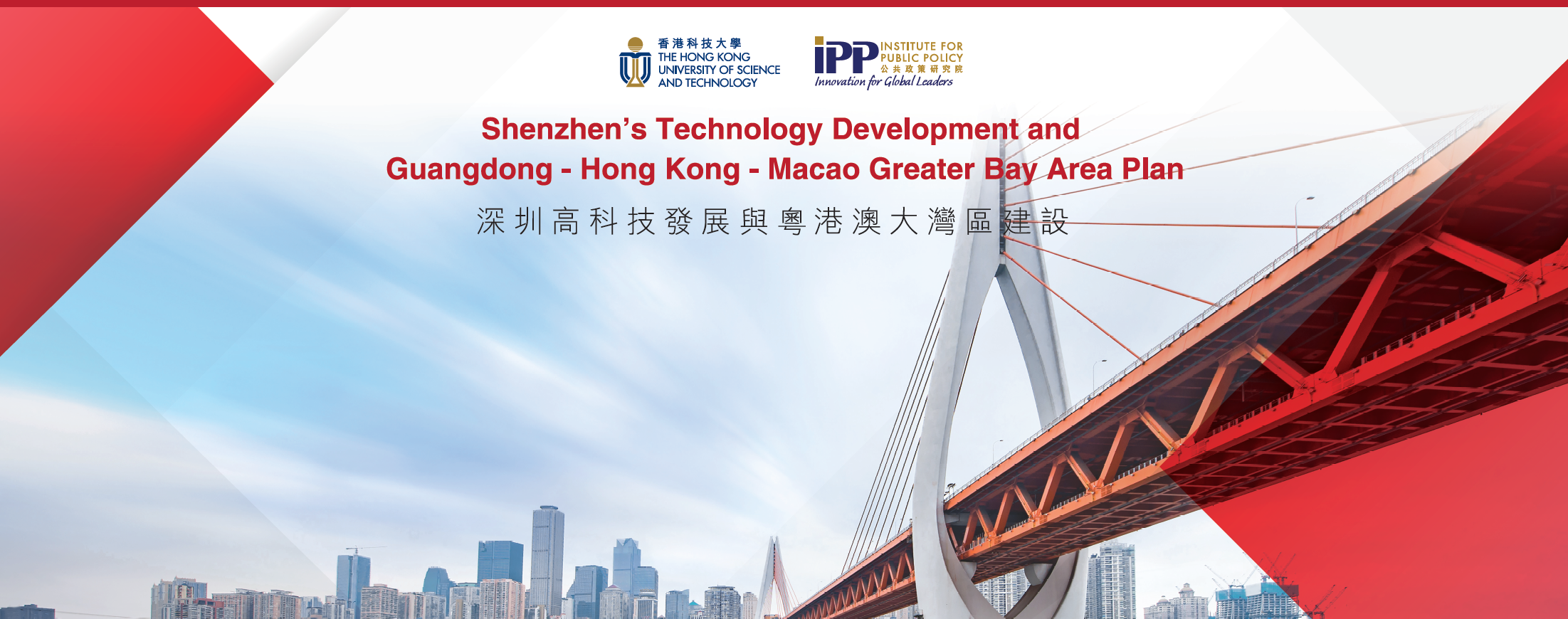| Schedule | |
|---|---|
| 2:30pm-3:00pm | Registration and Refreshment will be served outside of the venue |
| 3:00pm-3:05pm | Introduction by Prof. Ye QI (Director, Institute for Public Policy, HKUST) |
| 3:05pm-4:00pm | Speech by Mr.Siping ZHANG (Former Deputy Mayor of the Shenzhen Municipal Government) on "Shenzhen’s Technology Development and Guangdong-Hong Kong-Macao Greater Bay Area Plan" |
| 4:00pm-4:30pm | Q & A Session |
| 4:30pm | End of Program |

Mr. Siping ZHANG was the Former Deputy Mayor of the Shenzhen Municipal Government. He played a key role in Shenzhen’s technology development in various other capacities, including member of Standing Committee of the CPC of Shenzhen and the Head of Shenzhen United Front Work Department, Deputy Director of the Central Policy Research Office under the CPC Committee of Shenzhen, and Director of the Restructuring Office of Shenzhen. His other key positions in government include Former Deputy Head of the Chinese Academy of Social Sciences in Hubei Province, Deputy Director of the Research Centre for Social and Economic Development in Hainan Province, and Director of the Economic Restructuring Committee in Guangdong Province. He is one of distinguished and prominent experts in China.
講者簡介
張思平 先生, 曾任湖北省社科院副院長,海南省社會經濟發展研究中心副主任,中共深圳市委政研室副主任,深圳市體制改革辦公室主任,廣東省經濟體制改革委員會主任,廣東省人民政府第一副秘書長,深圳市人民政府副市長,中共深圳市委常委、市委統戰部長。國家級有突出貢獻的專家。
Abstract
Although Shenzhen has neither world-class universities nor state-level research institutions, it has experienced rapid growth of high-tech industries under China’s Reform and Opening-Up, and has emerged as a leading city in innovation nation-wide, earning its reputation as “China’s Silicon Valley”. In 2017, there were 11.2 thousands national-level high-tech companies and about 19 thousands other technological companies of different types and scale in Shenzhen. The amount of value added by Shenzhen’s high-tech industry amounted to ¥735.6 Billion, contributing to 32% of the GDP. In almost all sectors in high-tech industry, there are sectoral leaders from Shenzhen, including a few world-leading companies such as Huawei, Tencent, BYD Company, DJI, and EVOC.
One may therefore ponder: what are the drivers behind the strong growth in Shenzhen’s high-tech industry? Is it because Shenzhen is a young and vibrant city? It is certainly plausible as Shenzhen has young population and innovation is driven by young people. Is it because Shenzhen is a city of migrants? It can be a reasonable conclusion as diversity and tolerance are essential elements for innovation.
There are more fundamental reasons according to Mr. Siping ZHANG who was centrally involved in Shenzhen’s reform for 30 years. He will share his personal experience and long-term observations on the structural reasons for Shenzhen’s rise as a high-tech city, and he will also offer his insights on how Shenzhen’s high-tech industry can be a catalyst for the development of the Greater Bay Area.
摘要
深圳沒有名牌大學,也沒有國家級研究機構,但是在改革開放中,深圳高科技企業卻蓬勃發展,成為全國領先的創新型城市,有人說深圳是“中國矽谷”。 2017年深圳國家級高科技企業有1.12萬家,還有近19萬家不同類型、不同規模的科技企業。全年高科技產業增加值7359億元,佔GDP32%。在高科技產業的每個行業,包括細分行業,深圳都湧現了一批領軍企業,有些還成為著名的世界級企業,如華為、騰訊、比亞迪、大疆、研祥等。是什麼原因成就了深圳高科技產業發展的輝煌?是因為深圳是一個年輕、有活力的城市?這當然有道理,創新是以青年人為主體。是因為深圳是一個移民城市?這也是有道理的,多元化、包容性是創新必不可少的要素。但是,這些都不是根本性的原因。
在深圳從政近三十年,長期主持改革工作的“改革闖將”——張思平,將以其親身體會和長期的觀察思考告訴您,深圳高科技崛起的根本原因以及深圳高科技產業在粵港澳大灣區中的作用和方向。












